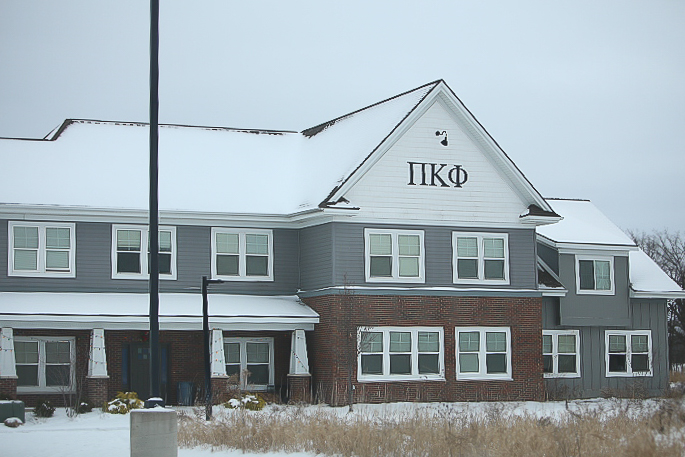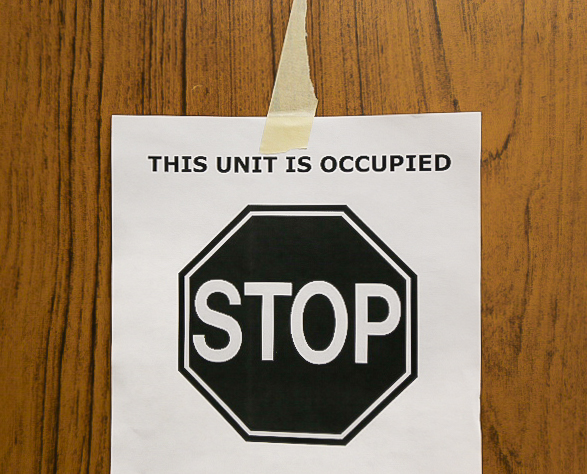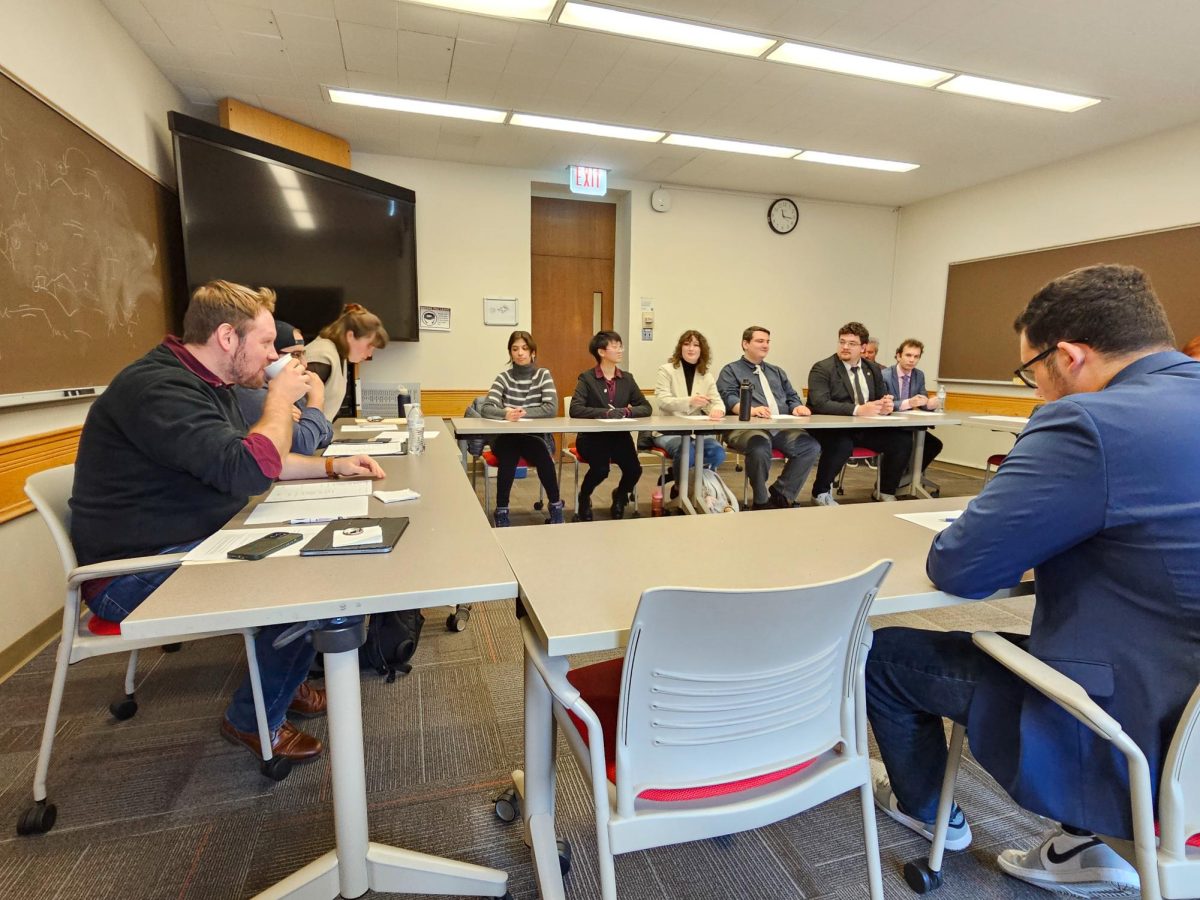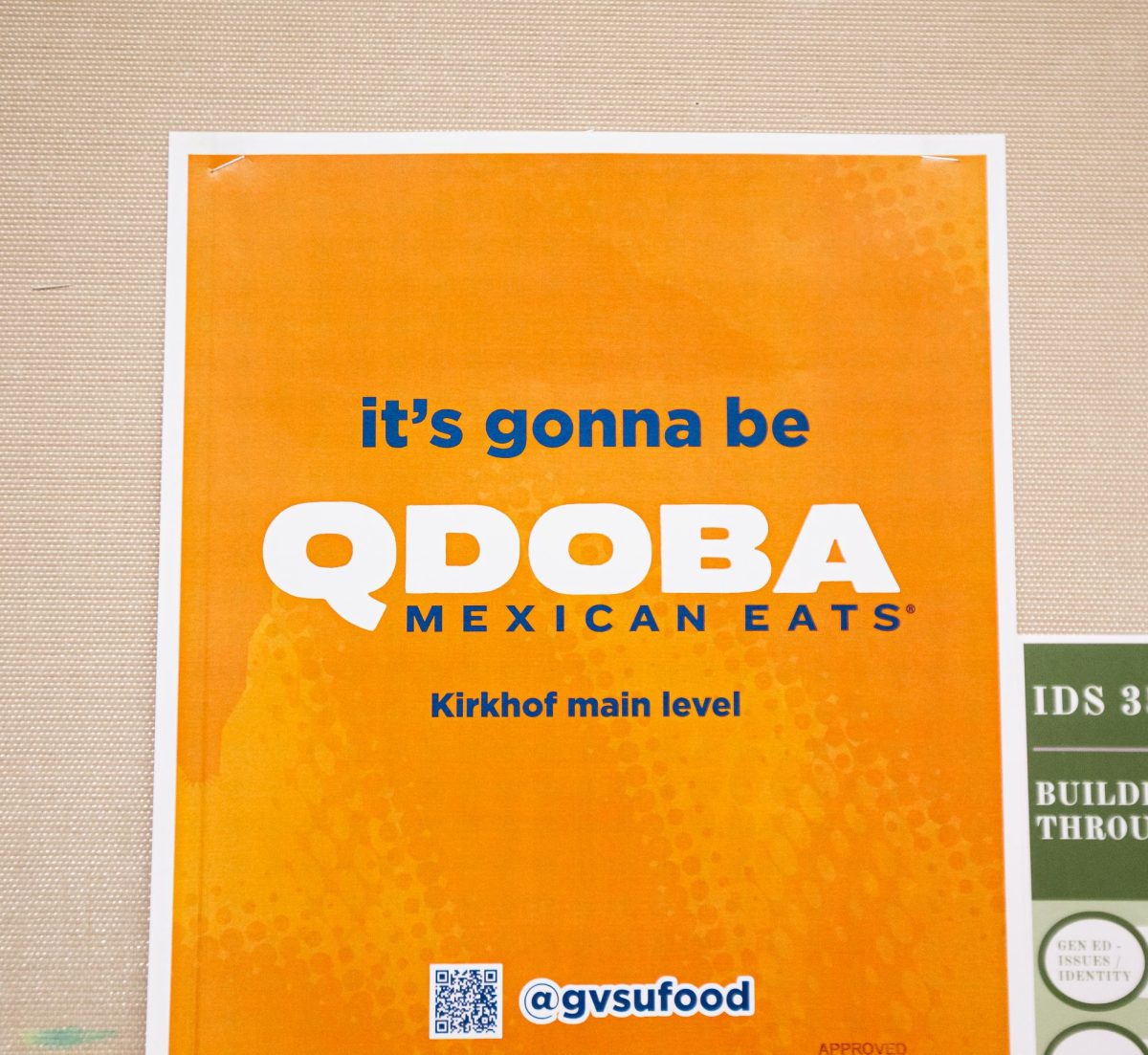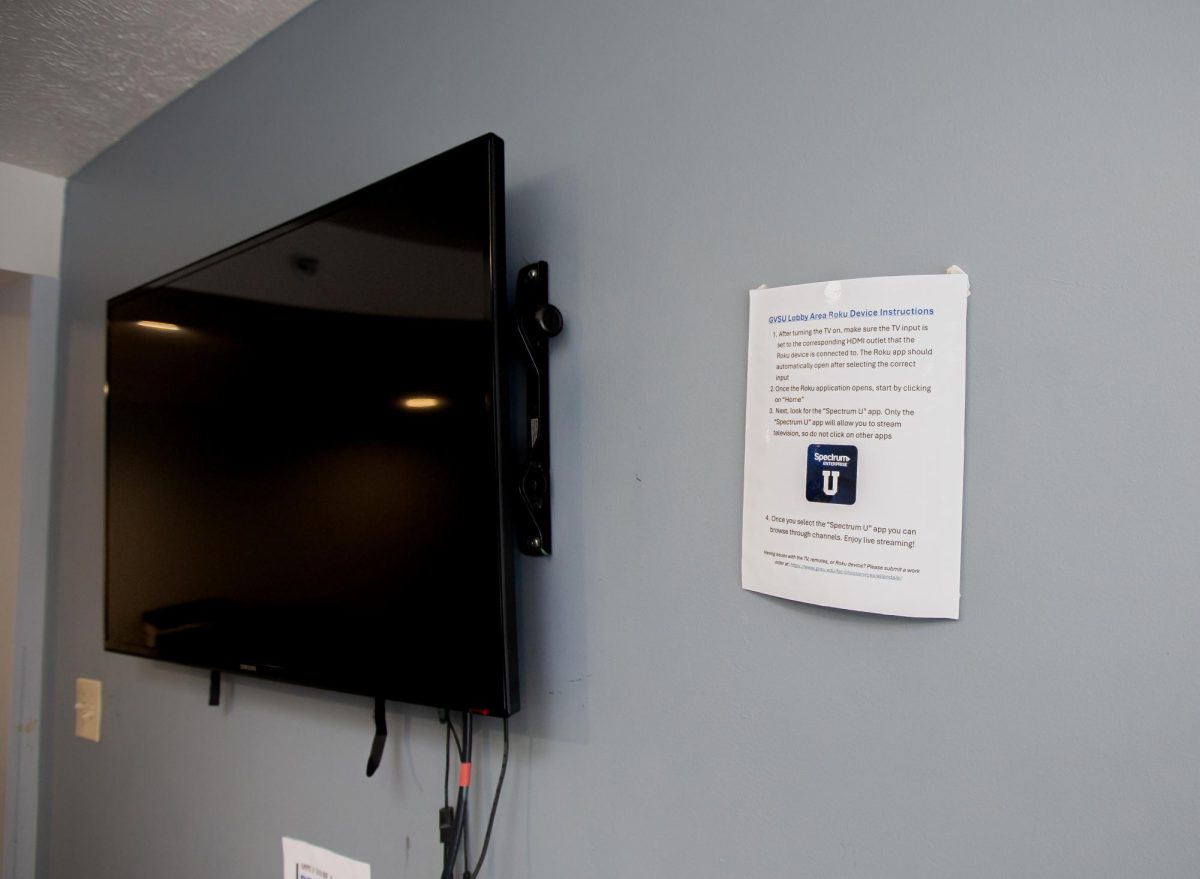GVSU professor discusses rising cost of tuition, food at Democracy 101 event
Dec 11, 2017
Students could pay for their college tuition in about 2.6 months working part time and making minimum wage in 1968. Now, students face crippling debt, have more difficulty affording healthful food and find that they can’t stretch their money as far.
As part of the Community Service Learning Center’s Democracy 101 series, Grand Valley State University sociology professor George Lundskow discussed the reasons behind the cost of education and healthful living rising so dramatically.
Lundskow shared his research with approximately 50 attendees on Wednesday, Dec. 6, in the Kirkhof Center. The talk lasted about an hour and was followed by a 20-minute Q&A session.
“Tuition has gone up nationwide because of government cutbacks and lack of support for higher education,” Lundskow said. “If government provided higher-level support, tuition would be $4,872 right now at GVSU.”
Lundskow pointed to the University of Michigan’s data for their tuition in 1968. Students at that time paid $210 a semester or $420 for an academic year, Lundskow said. If the rate had stayed the same, considering monetary changes, U-M’s tuition would be $2,918.27 today, according to Lundskow. Instead, the average in-state tuition is $15,433. Lundskow again pointed to the lack of support for higher education and government spending as reasons for the tuition increase.
“I hear every day all day about student debt implications for the future,” said Troy Farley, director of the Career Center at GVSU. “If students miss one or two (tuition) payments, they won’t be able to get that advertised rate for a car or for a mortgage.”
Lundskow also addressed the difficulties students face in buying healthful food.
“The more money you make, the better your health is,” he said.
Income is the No. 1 predictor of obesity and health outcomes, Lundskow said. He pointed out a two-tier food system in the U.S. and listed cheap, high-calorie, low-nutrition food as the first tier. He said more expensive, high-quality food is the second tier.
Lundskow said about 21 percent of white households, 30 percent of black households and 27 percent of Latino households have zero or negative net worth. This means it is very hard for poorer families to have access to healthier food, according to Lundskow.
Lundskow used the example of hamburgers to show the changes in food production in the U.S. Hamburgers used to be 85 percent meat with the rest water and fat, but today, meats are mostly water with bits of meat, ligaments, tendons, blood vessels and nerve tissue. Hens, cows and pigs are born to live in a tiny cage or area their entire lives, according to Lundskow, mainly because it is cheaper. Lundskow also pointed out the poor living conditions for these animals, saying that they often live in their own feces. Because of this, animals are treated with bleach or formaldehyde to sterilize the meat.
Lundskow believes this method of producing cheap, unhealthy foods filled with chemicals is bad for people. He said it costs about three times as much money to instead buy meat that has been raised in a good environment.
“The point of this is to create public discourse and to get you thinking,” Lundskow said. He told the audience that democracy can’t function unless people are actively engaged in every issue all the time. He believes the only way to end high tuition and low-quality food is for people to discuss the issues and go out and vote for people who will create a change.






